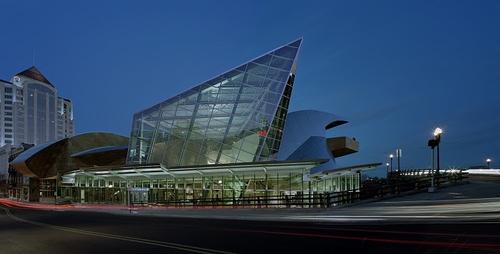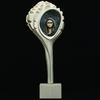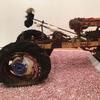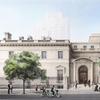Designing Building Systems To Protect Museum Treasures Is an Art in Itself; Behind the Scenes, IBE Consulting Engineers’ John Gautrey Protects Valuable Artworks
- LOS ANGELES, California
- /
- May 23, 2010

For museums that want to draw people to see great exhibitions, there is a case to be made for investing in the hidden treasures of optimal building systems.
The recent news that the famed Corcoran Gallery in Washington, DC, ended a major exhibition early because of faulty climate control equipment brought to light the critical impact of building systems on museum environments. It also caught the eye of John Gautrey, PE, partner of Los Angeles-based IBE Consulting Engineers—one of the nation’s leading MEP (mechanical, electrical, and plumbing) engineering firms—who has led the design of building systems for more than a dozen museums in his 23-year career.
Particularly in the case of art museums, instability in temperature and humidity imperils the exhibitions, an intolerable risk for both lending and borrowing institutions. “Most contracts for traveling art require that host museum conditions be held to much tighter tolerances than they are at the lending institutions,” says Gautrey. “Ultimately, it’s an insurance issue, but it goes to the heart of the mission and practice of the museum world. When conditions are not optimal, an institution may not be able to meet the stringent policies required by lenders.”
Gautrey notes that while it is usually the MEP systems that are blamed for these types of circumstances, sometimes the building envelope is actually the culprit—if it is porous and not constructed to a level consummate with the rigorous environmental tolerances demanded.
“Usually, air infiltrating a building is not a problem. With museums, the dynamic of securing the envelope is a far bigger issue,” says Gautrey. “You’ve got to force the dew point outside the building, and engineer it so that if condensation occurs, it does so on the other side of the structure’s moisture barrier. When IBE starts a new museum project, we confer with the architects to help ensure that the envelope is correctly detailed to accommodate heating, ventilation, and air conditioning (HVAC) systems, and to mitigate air infiltration.”
Weather differentials make the challenges greater. Museums in Southern California, where it is dry and relatively warm all year, face fewer variables. In less temperate climates, cold, dry winters and hot, humid summers create expansion and contraction problems for an institution with an envelope that’s less than airtight. “Humidity fluctuations are the killer,” says Gautrey.
In addition to an adequately secured envelope, the optimal performance of MEP systems is especially critical to a museum’s well-being. “In an office complex, a problem with indoor climate might result in people being too hot or too cold—but they can dress accordingly,” says Gautrey. “With a museum, there’s potential for irreplaceable artworks and artifacts to be compromised.”
While every project—particularly in today’s economy—may face cost-controlling measures, Gautrey advises a thorough evaluation of the ramifications of scaling back building systems in a museum environment because of the possibly adverse effect of “value engineering” on the building’s utility. Acknowledging the challenges of underwriting such inner-workings, he notes, “It’s sometimes very hard to convince donors to pay for things that they can’t see or put their name on. It’s our job to help everyone understand what’s at stake.”
IBE Consulting Engineers has worked with world-class architects on many museum projects: Akron Art Museum in Akron, OH (Coop Himmelb(l)au); Natural History Museum of Los Angeles County in Los Angeles, CA (CO Architects); Louis Vuitton Foundation for Creation in Paris, France (Gehry Partners); Nevada Museum of Art in Reno, NV (Will Bruder Architects); the Taubman Museum of Art in Roanoke, VA (Randall Stout Architects); and the Water + Life Museums in Hemet, CA (Lehrer + Gangi Design + Build), the first LEED Platinum certified museum in the world.
IBE Consulting Engineers designs mechanical, electrical, and plumbing systems that are responsive to architectural goals, meet clients’ budgetary and technical expectations, and achieve energy efficiency, ease of maintenance, system integration, and maximum sustainability. IBE has completed a wide array of project types, including large office buildings, museums, entertainment facilities, libraries, laboratories, film archives, educational facilities, retail buildings, and housing projects. IBE: Ideas for the Built Environment















